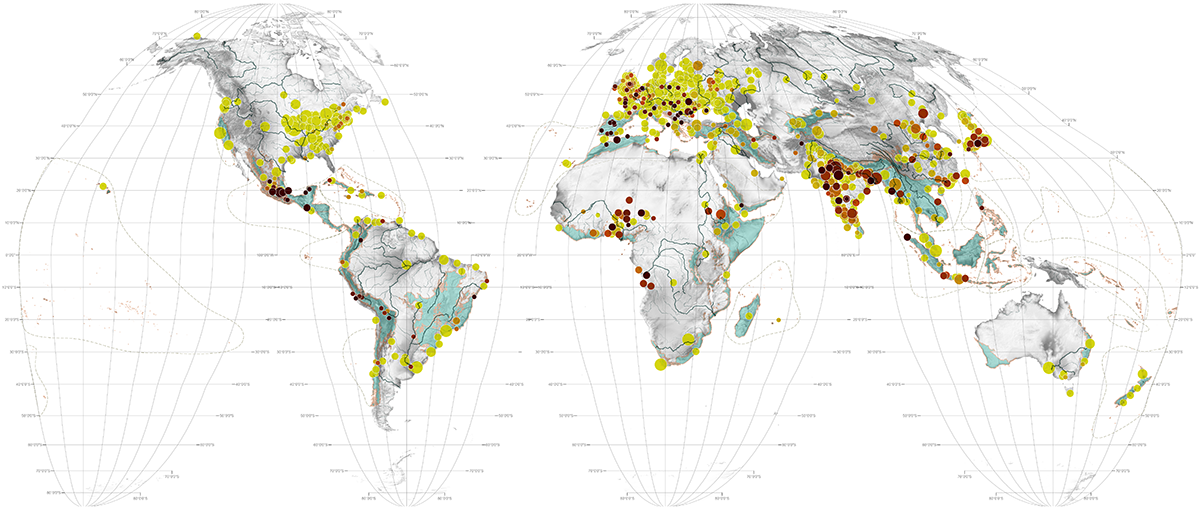The engine of modernity is the city and its radical proliferation since the 16th century is coupled with the colonization of the new world and the global resources it forced open and the markets it created. There are now 4,231 cities of more than 100,000 people rooted in virtually every ice-free ecoregion on earth.
With cities now networked globally and dependent upon the earth system of the Anthropocene the use of the expression 'planetary urbanization' to describe this latest phase of the evolution of the city seems apt. 1 The expression announces the transition of the city from its historical incarnation as primarily a series of discrete entities to its current condition as a global network of relations riven through the planet's ecological resources. So understood, the city is no longer something distinguishable from 'nature': it is a new nature.
Given forecasts of global population at least in the order of 10 billion by 2100 along with the rate at which the world is urbanizing it seems reasonable to expect something in the order of at least additional 3.0 billion people to live in cities this century. This means that in one form or another the equivalent of 357 New York Cities (4.25 per year) will be constructed this century. Because starting entirely new cities in new locations is expensive and because existing cities tend to resist densification, we can expect much of this new global development to be what is pejoratively known as sprawl. Because most of the growth is occurring and is likely to continue in Africa and south and central America it will not take the form of typical North American suburban sprawl or social housing as one finds in New York, rather, the growth will be informal and self-organized.
Having now reached the ends of the earth and altered the earth system's basic metabolic functions we are now living in what may well be the penultimate phase of the evolution of the city. On the one hand, planetary urbanization will prove on a global scale that the city has been a fundamentally unsustainable phenomenon all along. On the other, because it is increasingly subject to environmental feedback and intelligent design, planetary urbanization can be thought of as yet to reach its maturation as an ecologically integrated system.
1 Neil Brenner & Christian Schmid, "Planetary Urbanization," in Matthew Gandy (ed.), Urban Constellations (Berlin: Jovis Verlag, 2011), 12.
1. Evolution of Urbanization: pre-modern era
Meredith Reba, Femke Reitsma, & Karen C. Seto, "Spatializing 6,000 years of global urbanization from 3700 BC to AD 2000," Scientific Data 3, 160034. Data available through the Yale University Seto Lab: Urbanization & Global Change, "Historical Urban Population Growth Data," http://urban.yale.edu/data (accessed June 18, 2016). Data made available under the Creative Commons Attribution 4.0 International Licenses: https://creativecommons.org/licenses/by/4.0/legalcode.
2. Hotspots
Critical Ecosystem Partnership Fund, "The Biodiversity Hotspots," http://www.cepf.net/resources/hotspots/pages/default.aspx (accessed July 1, 2014). Data made available under the Creative Commons BY-SA 4.0 License: https://creativecommons.org/licenses/by-sa/4.0/legalcode.




